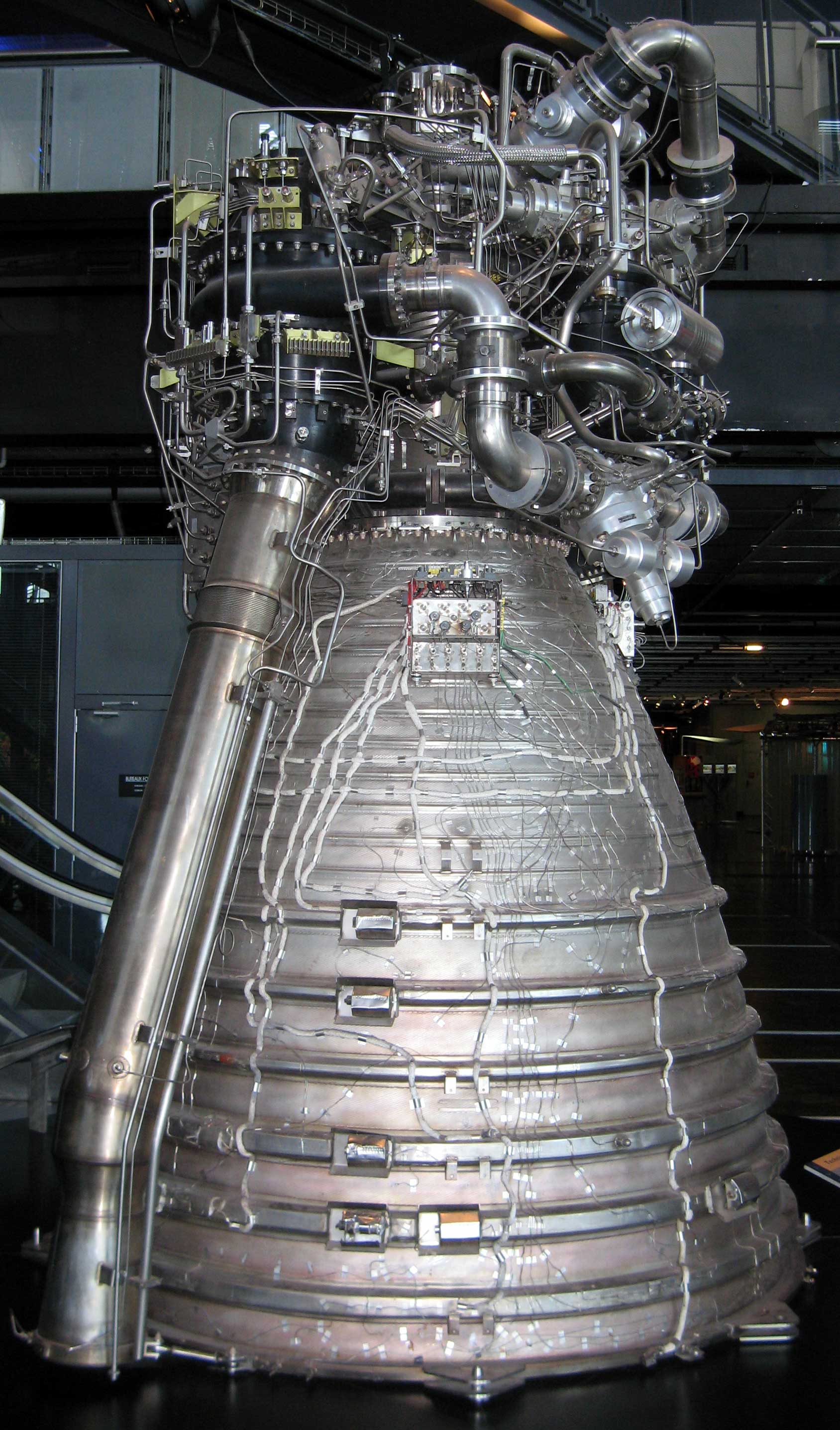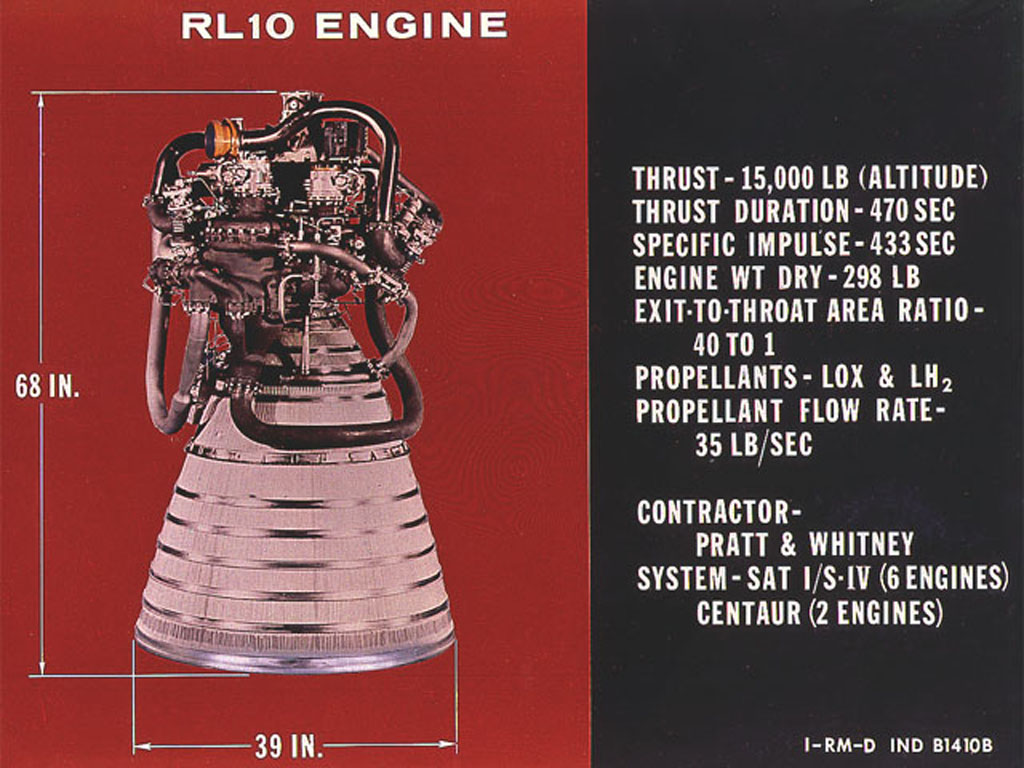Cryogenic rocket engine on:
[Wikipedia]
[Google]
[Amazon]
 A cryogenic rocket engine is a
A cryogenic rocket engine is a
 Rocket engines need high mass flow rates of both oxidizer and fuel to generate useful thrust. Oxygen, the simplest and most common oxidizer, is in the gas phase at
Rocket engines need high mass flow rates of both oxidizer and fuel to generate useful thrust. Oxygen, the simplest and most common oxidizer, is in the gas phase at
 Currently, six countries have successfully developed and deployed cryogenic rocket engines:
Currently, six countries have successfully developed and deployed cryogenic rocket engines:
USA's Cryogenic Rocket engine RL10B-2
{{DEFAULTSORT:Cryogenic Rocket Engine Rocket propulsion Rocket engines
 A cryogenic rocket engine is a
A cryogenic rocket engine is a rocket engine
A rocket engine is a reaction engine, producing thrust in accordance with Newton's third law by ejecting reaction mass rearward, usually a high-speed Jet (fluid), jet of high-temperature gas produced by the combustion of rocket propellants stor ...
that uses a cryogenic fuel
Cryogenic fuels are fuels that require storage at extremely low temperatures in order to maintain them in a liquid state. These fuels are used in machinery that operates in space (e.g. rockets and satellites) where ordinary fuel cannot be used, d ...
and oxidizer
An oxidizing agent (also known as an oxidant, oxidizer, electron recipient, or electron acceptor) is a substance in a redox chemical reaction that gains or " accepts"/"receives" an electron from a (called the , , or ''electron donor''). In ot ...
; that is, both its fuel and oxidizer are gases which have been liquefied and are stored at very low temperatures. These highly efficient engines were first flown on the US Atlas-Centaur and were one of the main factors of NASA
The National Aeronautics and Space Administration (NASA ) is an independent agencies of the United States government, independent agency of the federal government of the United States, US federal government responsible for the United States ...
's success in reaching the Moon by the Saturn V
The Saturn V is a retired American super heavy-lift launch vehicle developed by NASA under the Apollo program for human exploration of the Moon. The rocket was human-rated, had multistage rocket, three stages, and was powered by liquid-propel ...
rocket.
Rocket engines burning cryogenic propellants remain in use today on high performance upper stages and boosters. Upper stages are numerous. Boosters include ESA's Ariane 6, JAXA
The is the Japanese national air and space agency. Through the merger of three previously independent organizations, JAXA was formed on 1 October 2003. JAXA is responsible for research, technology development and launch of satellites into o ...
's H-II, ISRO
The Indian Space Research Organisation (ISRO ) is India's national space agency, headquartered in Bengaluru, Karnataka. It serves as the principal research and development arm of the Department of Space (DoS), overseen by the Prime Minister o ...
's GSLV, LVM3, NASA's Space Launch System
The Space Launch System (SLS) is an American Super heavy-lift launch vehicle, super heavy-lift Expendable launch system, expendable launch vehicle used by NASA. As the primary launch vehicle of the Artemis program, Artemis Moon landing progra ...
. The United States, Russia, India, Japan, France and China are the only countries that have operational cryogenic rocket engines.
Cryogenic propellants
 Rocket engines need high mass flow rates of both oxidizer and fuel to generate useful thrust. Oxygen, the simplest and most common oxidizer, is in the gas phase at
Rocket engines need high mass flow rates of both oxidizer and fuel to generate useful thrust. Oxygen, the simplest and most common oxidizer, is in the gas phase at standard temperature and pressure
Standard temperature and pressure (STP) or standard conditions for temperature and pressure are various standard sets of conditions for experimental measurements used to allow comparisons to be made between different sets of data. The most used ...
, as is hydrogen, the simplest fuel. While it is possible to store propellants as pressurized gases, this would require large, heavy tanks that would make achieving orbital spaceflight
An orbital spaceflight (or orbital flight) is a spaceflight in which a spacecraft is placed on a trajectory where it could remain in space for at least one orbit. To do this around the Earth, it must be on a free trajectory which has an altit ...
difficult if not impossible. On the other hand, if the propellants are cooled sufficiently, they exist
eXist-db (or eXist for short) is an open source software project for NoSQL databases built on XML technology. It is classified as both a NoSQL document-oriented database system and a native XML database (and it provides support for XML, JSON, HTM ...
in the liquid phase at higher density and lower pressure, simplifying tankage. These cryogenic
In physics, cryogenics is the production and behaviour of materials at very low temperatures.
The 13th International Institute of Refrigeration's (IIR) International Congress of Refrigeration (held in Washington, DC in 1971) endorsed a univers ...
temperatures vary depending on the propellant, with liquid oxygen
Liquid oxygen, sometimes abbreviated as LOX or LOXygen, is a clear cyan liquid form of dioxygen . It was used as the oxidizer in the first liquid-fueled rocket invented in 1926 by Robert H. Goddard, an application which is ongoing.
Physical ...
existing below and liquid hydrogen
Liquid hydrogen () is the liquid state of the element hydrogen. Hydrogen is found naturally in the molecule, molecular H2 form.
To exist as a liquid, H2 must be cooled below its critical point (thermodynamics), critical point of 33 Kelvins, ...
below . Since one or more of the propellants is in the liquid phase, all cryogenic rocket engines are by definition liquid-propellant rocket engines.
Various cryogenic fuel-oxidizer combinations have been tried, but the combination of liquid hydrogen ( LH2) fuel and the liquid oxygen ( LOX) oxidizer is one of the most widely used.The liquefaction temperature of oxygen is 89 kelvin
The kelvin (symbol: K) is the base unit for temperature in the International System of Units (SI). The Kelvin scale is an absolute temperature scale that starts at the lowest possible temperature (absolute zero), taken to be 0 K. By de ...
s, and at this temperature it has a density of 1.14 kg/L. For hydrogen it is 20 K, just above absolute zero
Absolute zero is the lowest possible temperature, a state at which a system's internal energy, and in ideal cases entropy, reach their minimum values. The absolute zero is defined as 0 K on the Kelvin scale, equivalent to −273.15 ° ...
, and has a density of 0.07 kg/L. Both components are easily and cheaply available, and when burned have one of the highest enthalpy
Enthalpy () is the sum of a thermodynamic system's internal energy and the product of its pressure and volume. It is a state function in thermodynamics used in many measurements in chemical, biological, and physical systems at a constant extern ...
releases in combustion
Combustion, or burning, is a high-temperature exothermic redox chemical reaction between a fuel (the reductant) and an oxidant, usually atmospheric oxygen, that produces oxidized, often gaseous products, in a mixture termed as smoke. Combustion ...
, "... H2+LOXhas almost the highest specific impulse." producing a specific impulse
Specific impulse (usually abbreviated ) is a measure of how efficiently a reaction mass engine, such as a rocket engine, rocket using propellant or a jet engine using fuel, generates thrust. In general, this is a ratio of the ''Impulse (physics), ...
of up to 450 s at an effective exhaust velocity of .
Components and combustion cycles
The major components of a cryogenic rocket engine are thecombustion chamber
A combustion chamber is part of an internal combustion engine in which the air–fuel ratio, fuel/air mix is burned. For steam engines, the term has also been used for an extension of the Firebox (steam engine), firebox which is used to allow a mo ...
, pyrotechnic initiator, fuel injector, fuel and oxidizer turbopumps, cryo valves, regulators, the fuel tanks, and rocket engine nozzle. In terms of feeding propellants to the combustion chamber, cryogenic rocket engines are almost exclusively pump-fed. Pump-fed engines work in a gas-generator cycle, a staged-combustion cycle, or an expander cycle
Expander may refer to:
*Dynamic range compression operated in reverse
*Part of the process of signal compression
*Part of the process of companding
*A component used to connect Serial Attached SCSI#SAS expanders, SCSI computer data storage, device ...
. Gas-generator engines tend to be used on booster engines due to their lower efficiency, staged-combustion engines can fill both roles at the cost of greater complexity, and expander engines are exclusively used on upper stages due to their low thrust.
LOX+LH2 rocket engines by country
 Currently, six countries have successfully developed and deployed cryogenic rocket engines:
Currently, six countries have successfully developed and deployed cryogenic rocket engines:
Comparison of first stage cryogenic rocket engines
Comparison of upper stage cryogenic rocket engines
References
External links
USA's Cryogenic Rocket engine RL10B-2
{{DEFAULTSORT:Cryogenic Rocket Engine Rocket propulsion Rocket engines
Rocket
A rocket (from , and so named for its shape) is a vehicle that uses jet propulsion to accelerate without using any surrounding air. A rocket engine produces thrust by reaction to exhaust expelled at high speed. Rocket engines work entirely ...
Hydrogen technologies